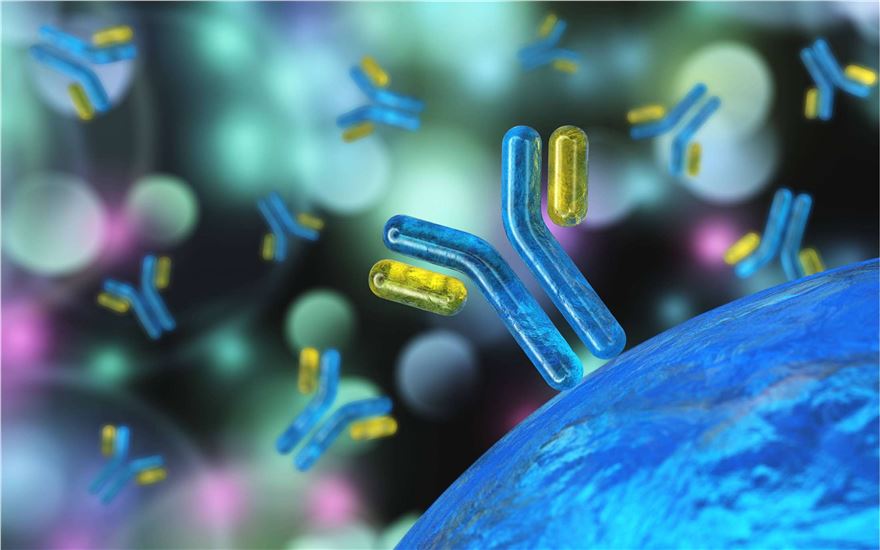Monoclonal antibodies can be meticulously generated using hybridoma technology or the innovative phage display technology. These mAbs come with a plethora of advantages, including high purity, sensitivity, specificity, minimal cross-reactivity, and cost-effectiveness. The diverse applications of monoclonal antibodies in the field of biomedicine are astounding. They play a pivotal role in testing medical diagnostic reagents, enabling precise protein purification, facilitating tumor-directed therapy, and revolutionizing radioimmunoimaging technology. In the challenging landscape of tumor therapy, the weakly acidic tumor microenvironment serves as a unique opportunity. pH-sensitive monoclonal antibodies capitalize on this acidity, enhancing their tumor-targeting capabilities and specificity for better treatment of tumors. At Creative Biolabs, we leverage our extensive field experience and cutting-edge phage display platform to offer comprehensive services, supporting the development of pH-sensitive monoclonal antibodies that are tailored to meet your specific needs.

The exquisite specificity and high affinity of monoclonal antibodies position them as highly sought-after agents in biologics. Their ability to effectively bind and potentially neutralize biological targets is unparalleled. Widely recognized as the best-selling class of biologics, monoclonal antibodies find extensive use in cancer treatment and autoimmune diseases. Moreover, their high affinity extends their utility to diverse research applications, including protein purification, the creation of highly specific biosensors, and the development of immunoassays (e.g., enzyme-linked immunosorbent assays). In summary, the multifaceted advantages of monoclonal antibodies have transformed disease therapy and diagnosis, making them indispensable in the field of biomedicine.
However, high affinity binding can also have unwanted effects during therapeutic interventions. mAbs targeting soluble proteins like cytokines often form stable antibody-antigen complexes due to their interaction with the neonatal Fc receptor. This interaction leads to significant target accumulation. The Fc receptor is responsible for the long serum half-life of IgG, which binds to this receptor in the microacidic environment of the early endosomes before returning to the extracellular compartment. It plays a crucial role in extending the serum half-life of IgG, which initially binds to the receptor in the mildly acidic environment of early endosomes before returning to the extracellular compartment. Interestingly, if the antibody-antigen interaction is stable under these conditions, the bound antigen circulates with the antibody and persists in the circulation.
For these reasons, the development of antibodies capable of high-affinity binding to specific antigens under physiological conditions, while releasing the target in response to minor environmental changes, holds great promise for both research and therapeutic applications. One intriguing strategy is to create pH-dependent mAbs that bind to antigens at a neutral pH range of 7-7.4 and release antigens under slightly acidic conditions (pH 5.5-6.0). The unique ability of these antibodies to dissociate immune complexes without compromising the antibody's structure and stability or the target protein enables their regeneration and reuse, with minimal loss of performance over repeated cycles. Additiaonally, pH-sensitive monoclonal antibodies exhibit significant therapeutic potential, as they can neutralize targets in the extracellular environment and release bound antigens upon endosomal internalization. These pH-sensitive antibodies are expected to have an extended half-life due to the circulation of free antibodies, rather than immune complexes, allowing for reduced in dosage or less frequent administration. This approach is particularly suitable for targeting a wide range of proteins.
Several studies have reported the success of pH-sensitive monoclonal antibodies against both soluble and membrane proteins, such as IL6, IL6R, and PCSK9. These antibodies take advantage of the properties of histidine residues, which possess a logarithmic acid dissociation constant (pKa) of approximately 6.0. As a result, histidine residues remain neutral at a pH of 7.2 but become positively charged at pH levels below 6.0. These additional positive charges disrupt the interaction between proteins, a principle initially demonstrated in mutants of granulocyte colony-stimulating factor (G-CSF) that contain histidine residues and are separated from their receptors within endosomes. In the case of monoclonal antibodies, histidine is typically introduced at the interface between the antibody and its target, specifically within the complementarity determining region (CDR). These underlying theories are equally applicable to the development of pH-sensitive Fab, pH-sensitive VHH, pH-sensitive scFv, and other antibody types. Combining pH-sensitive properties with these antibodies enhances their potential utility in cancer therapy. In particular, VHH antibodies offer distinct advantages, such as exceptional stability and solubility, which can significantly enhance drug efficacy. pH-sensitive VHH antibodies are particularly adept at targeting tumor sites, greatly improving their therapeutic impact.
More Details on pH-sensitive Monoclonal Antibody Discovery through Phage Display
Introduction to pH-sensitive Fab Discovery by Phage Display
Introduction to pH-sensitive scFv Discovery by Phage Display
Introduction to pH-sensitive VHH Discovery by Phage Display
At Creative Biolabs, our team possesses a wealth of knowledge and experience in pH-sensitive biomolecules. We are eager to share our expertise in pH-sensitive monoclonal antibody discovery with you.
All listed services and products are For Research Use Only. Do Not use in any diagnostic or therapeutic applications.